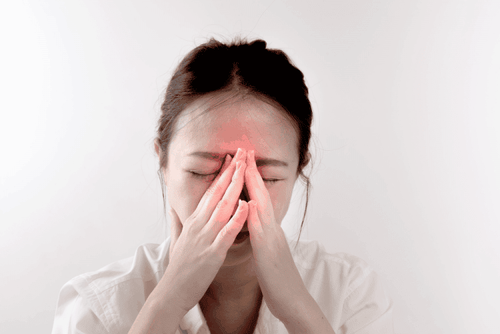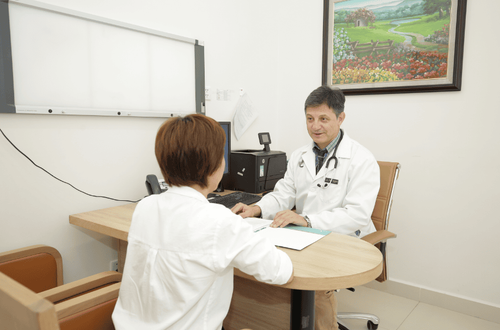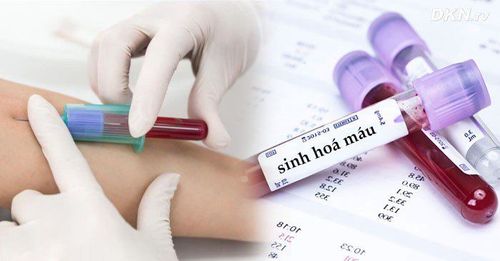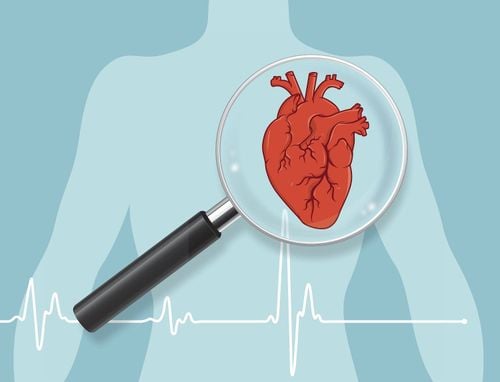This is an automatically translated article.
The article was professionally consulted by Specialist Doctor II Ho Viet Le Diem - General Internal Medicine - Department of Examination & Internal Medicine - Vinmec Central Park International General Hospital.Symptoms of sinusitis are quite common and can be easily confused with other illnesses, from the common cold to perennial rhinitis. When the symptoms of the disease persist, recognizing the signs of sinus disease and taking a complete and detailed history of sinusitis will contribute to comprehensive care during a general physical examination. .
1. What is sinusitis?
Sinusitis, also known as rhinosinusitis, is an inflammation of one or more paranasal sinuses. Signs of sinus disease are identified on physical examination by at least two of the following: Upper airway obstruction, runny nose, headache, decreased or lost sense of smell. With the above symptoms, if it lasts up to 12 weeks, it is called acute sinusitis. Conversely, when symptoms persist for more than 12 weeks, it is called chronic sinusitis. The staging of the disease is significant in the approach, treatment and monitoring of the disease. At the same time. Each disease has a different prognosis as well as the possibility of requiring intervention.Accordingly, in the absence of active treatment, sinusitis can lead to severe complications, sometimes invasive central nervous system infections such as meningitis, brain abscess, life-threatening .
2. Information to take in the history of acute sinusitis during a general physical examination
Acute sinusitis is a clinical diagnosis, therefore, understanding and experience of the manifold manifestations of acute sinusitis is important in differentiating this pathology from allergic rhinitis, bronchiolitis and bronchiolitis. Vascular or upper respiratory tract infections are very common.Signs of acute sinus disease on clinical examination for sinusitis may include:
Pain in the cheek region and radiating to the forehead or teeth

Người bệnh viêm xoang xuất hiện các cơn đau vùng trán hoặc má
In addition, a history of occupational or allergic rhinitis, vasomotor rhinitis, and nasal polyps should also be noted. Rhinitis is also more common in people with cystic fibrosis, congenital or acquired immunodeficiency.
In addition, if the patient has a history of diabetes or an organ transplant, besides viral or bacterial, invasive fungal sinusitis should also be considered.
3. Information to take into account the history of chronic sinusitis during a general physical examination
A patient history of repeated sinusitis is extremely important in chronic sinusitis. Because of the overlapping symptoms of pathology in the sinuses, nose, and throat, in addition to sinusitis examination, comparing symptoms with endoscopic and radiological results, a history of sinusitis extending from more than three month is very important.In many cases, chronic sinusitis presents more quietly than acute sinusitis. However, it can still start suddenly due to an upper respiratory infection or when acute sinusitis persists without resolution. Although, if the patient has fever, headache, it is the exclusion criterion.

Người bệnh viêm xoang cần khai báo thông tin chính xác trong quá trình thăm khám
stuffy nose Runny nose with clear, mucoid or fluid nature Solid Always feeling uncomfortable Headaches Toothache Chronic cough Sneezing Chronic shortness of breath Sore throat Anorexia Decreased sense of smell Smells bad Smelling blocked ear canal Smoldering fever of unknown origin Bad breath Snoring Chronic lack of oxygen During the duration of symptoms, the patient may have been treated many times and in many places, and have certain "experiences" about his or her own pathology, such as:
Exacerbating and mitigating factors symptoms Past treatment and duration Current medications Current indications for previous sinus or nasal surgery Previous imaging tests

Người bệnh đang sử dụng thuốc điều trị viêm xoang cần sử dụng đúng chỉ định theo hướng dẫn của bác sĩ
4. Periodic general health examination and taking history of sinusitis at Vinmec
Whether it is acute or chronic, sinusitis is generally a fairly common disease in the community, as a result of the interaction between local and environmental factors. Therefore, if in the past, people used to only see a doctor when they were sick, today, routine health care for the nose and sinuses, proactive disease prevention is becoming popular. At the same time, the regular medical examination in general, the doctor inquires about health sometimes helps to detect abnormalities that you have not noticed yourself. From there, people will have an early diagnosis, help with early treatment of diseases as well as receive medical advice on a healthy lifestyle, reducing the risk of common diseases.On the other hand, doctors also always ask patients to be checked regularly to help maintain health. This is the importance of prevention, as a measure to reduce the number of patients requiring medical or surgical treatment, to get the right treatment quickly, to avoid any complications.
Vinmec International General Hospital system deploys general health examination packages and performs paraclinical tests suitable for each subject. Customers will have their own medical history and family history taken directly by the doctor, measuring blood pressure, body mass index, physical examination, performing screening tests as well as counseling in each situation.
With a team of professional, highly qualified and experienced doctors, modern facilities, advanced testing machinery system, the periodic health check-up at Vinmec deserves to be an address. Reliable, world-class quality medical care for everyone and every family.
Doctor Ho Viet Le Diem has more than 10 years working in the Department of Resuscitation - Cardiac Surgery at Cho Ruong Hospital with the position of cardiologist and Open Heart Resuscitation. And has more than 03 years as a General Internal Medicine doctor at Family Medical Practice in Ho Chi Minh City. Currently, Dr. Diem is working at the Internal Medicine Department - Vinmec Central Park International General Hospital.
Please dial HOTLINE for more information or register for an appointment HERE. Download MyVinmec app to make appointments faster and to manage your bookings easily.
MORE
Sinusitis: Causes, symptoms, diagnosis and treatment Acute bacterial rhinosinusitis in children Long-term sinusitis can cause nasal polyps













